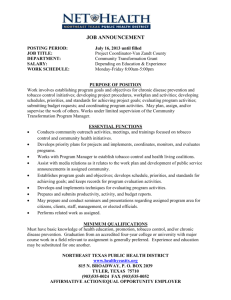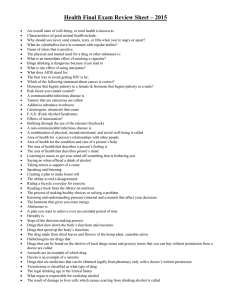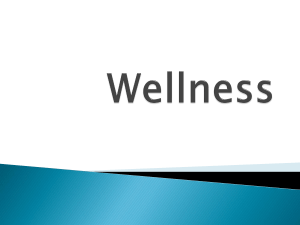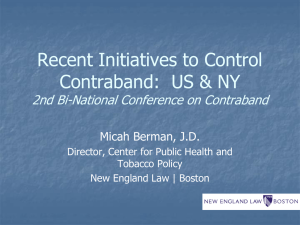Slides - Medical and Public Health Law Site
advertisement
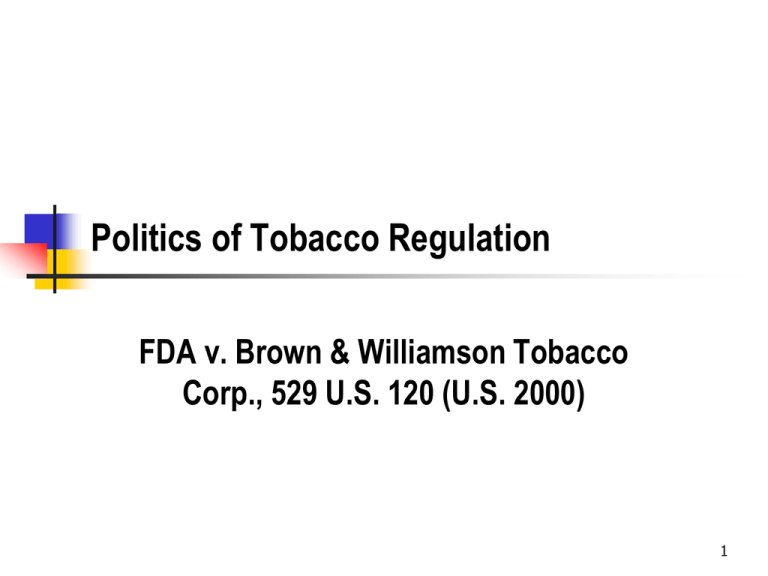
Politics of Tobacco Regulation FDA v. Brown & Williamson Tobacco Corp., 529 U.S. 120 (U.S. 2000) 1 Pharmacology of Tobacco Primary drug effect is nicotine Strong nervous system drug using in classic neurophysiology research Great natural bug killer An oily plant that makes a smoky fire Tars from combustion cause cancer and emphysema Is marijuana safer? 2 Public Health Impact of Tobacco #1 preventable cause of illness #1 problem is heart disease 6 out of 7 smokers do not live to get lung cancer Heart attack data on secondary smoking Emphysema is the big lung issue - nasty way to live, then you die Poorly understood genetic factors affect individual risk. 3 In Defense of Tobacco Tobacco will reduce life-time health care costs if you smoke enough Ideally you will also eat a lot of burgers while sitting on the couch watching TV Limits retirement costs Saves Medicare and Social Security Great for private pension plans as well Also improves job opportunities for young, cheaper workers 4 Problems in Stopping We have made great progress in reducing smoking Why is it hard to quit? Recession helps Changing fashion helps Why not just ban it? May have plateaued after the tobacco settlement States make more money if kids smoke. A major role of the government is making it harder to smoke Even LA banned indoor smoking 5 Tobacco in the Colonies What was the role of tobacco in the colonial period? How was smoking viewed by most people in the 1950s? What happened in 1964? Surgeon General's Report on Smoking and Health 6 Federal Cigarette Labeling and Advertising Act - 1965/1969 Required hazard labeling on cigarettes Banned cigarette advertising in electronic media regulated by the FCC Why not ban it everywhere? Prevented additional state requirements Which requirements were they worried about? What happened in torts in 1965? What about non-tort concerns? 7 Politics of FDA Chairman Kessler was appointed by Bush I Liked publicity Wanted to keep his job when Clinton can into office Banned silicone breast implants - just to be safe Made 4.5 billion for trial lawyers and got to keep his job No scientific evidence ever supported the ban 8 FDA v. Brown & Williamson Tobacco Corp., 529 U.S. 120 (U.S. 2000) The FDA decided to regulate tobacco What was the politics? What had the FDA said about tobacco regulation over the past 50 years? 9 The Regulation Which group of smokers did the regulation target? Why this group? How did the regulation attempt to reduce smoking in this group? What was the tobacco companies attack on this regulation? 10 Definition of Drugs and Devices The Act defines "drug" to include "articles (other than food) intended to affect the structure or any function of the body." 21 U. S. C. §321(g)(1)(C). It defines "device," in part, as "an instrument, apparatus, implement, machine, contrivance, ... or other similar or related article, including any component, part, or accessory, which is ... intended to affect the structure or any function of the body." §321(h). The Act also grants the FDA the authority to regulate so-called "combination products," which "constitute a combination of a drug, device, or biologic product." §353(g)(1). The FDA has construed this provision as giving it the discretion to regulate combination products as drugs, as devices, or as both. See 61 Fed. Reg. 44400 (1996). 11 Enforcement Tools: Adulteration and Misbranding The Act prohibits "[t]he introduction or delivery for introduction into interstate commerce of any food, drug, device, or cosmetic that is adultered or misbranded." 21 U. S. C. §331(a) §352(j) deems a drug or device misbranded "[i]f it is dangerous to health when used in the dosage or manner, or with the frequency or duration prescribed, recommended, or suggested in the labeling thereof." Drugs must be proven safe and effective 12 Enforcement Tools: Labeling Second, a drug or device is misbranded under the Act "[u]nless its labeling bears ... adequate directions for use ... in such manner and form, as are necessary for the protection of users," except where such directions are "not necessary for the protection of the public health." §352(f)(1). Mislabeling is a major enforcement tool Is it possible to label tobacco so it can be used safely? 13 Stopped here 14 Combination Product What is the purpose of a cigarette? Is it purely a drug delivery system? How else can you deliver nicotine? Why might you want to deliver nicotine without smoking? 15 FDA Jurisdiction Not the broad definition of interstate commerce used in civil rights cases Tied to interstate sale Unless the state regulates you, you can make and sell a drug within a state and not be under FDA regulation Still have to deal with FTC No authority over how drugs are prescribed and used Only regulates manufacturing, interstate sale, and promotion. What is the big interstate issue with tobacco? 16 FDA Regulation of Tobacco Does tobacco fit within the definition of a drug? Is tobacco safe and effective for any use? What would be the effect of applying the safe and effective test to tobacco? Thus, the Act generally requires the FDA to prevent the marketing of any drug or device where the "potential for inflicting death or physical injury is not offset by the possibility of therapeutic benefit." How does the FDA argue that it does not have to show that tobacco is safe and effective? Does this create a regulatory paradox? How is it different from chemotherapy drugs? 17 Chevron - Step One Does tobacco fall under the statute? Is it specifically named? Is it specifically prohibited? Why is there a question of ambiguity in what the statute means? Doesn't tobacco affect the body? 18 Chevron – Step Two What was congressional intent? What about in the 30s, when the modern drug provisions were passed? The 1950s when they were expanded? What is the evidence that congress did not intend for the FDA to regulation tobacco in modern times? Alternative regulatory schemes and agencies? Renewed and expanded the FDA Act without addressing tobacco, despite efforts to add tobacco to the Act 19 United States Supreme Court Opinion The majority (including Scalia) said this was evidence that Congress did not intend for the FDA to regulate tobacco, and that such intent trumped Chevron Minority (Breyer) said just look at the law Politics trumps principle (which is probably right in this case) 20

